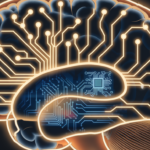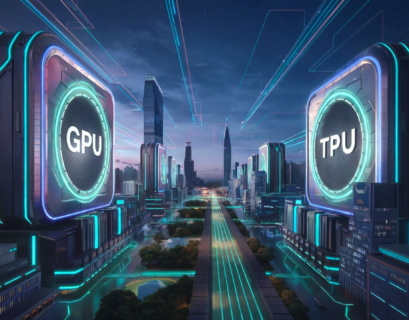Text summarization NLP is a vital tool in today’s digital age, where we are constantly overwhelmed by a vast sea of information. Did you know that while humans can only process a limited amount of information, the volume of data we encounter daily is ever-increasing? That’s where NLP text summarization steps in to save the day!
In this article, we will delve into the fascinating realm of Natural Language Processing (NLP) and uncover two powerful techniques for distilling text while maintaining its core meaning. Prepare to explore the intricacies of extractive and abstractive summarization methods—your ultimate solution to mastering information overload in 2024!
Understanding Text Summarization in NLP
Before we delve into the nitty-gritty of extractive and abstractive methods, let’s take a moment to understand what text summarization is all about in the context of Natural Language Processing. Text summarization is a crucial task in NLP that aims to create concise and fluent summaries of longer texts while preserving the core information and overall meaning. It’s like having a super-smart assistant who can read through lengthy documents and give you the key points in a fraction of the time!
The importance of text summarization in NLP cannot be overstated. In a world where information is constantly bombarding us from all directions, the ability to quickly distill the essence of a text is invaluable. It helps us save time, improve comprehension, and make informed decisions faster.
The main goal of text summarization is twofold:
- To reduce the length of the original text
- To maintain the most important information and overall meaning
Achieving this balance is no easy feat, which is why researchers and data scientists have developed various approaches to tackle this challenge. The two main approaches we’ll be exploring in depth are extractive summarization and abstractive summarization.
Extractive Summarization: Selecting the Best Bits
Let’s start with extractive summarization – the method that’s all about cherry-picking the best parts of the original text. Think of it as creating a “greatest hits” album of sentences!
How Extractive Summarization Works
Extractive summarization techniques work by identifying and selecting the most important sentences or phrases from the original text to form a summary. The process typically involves the following steps:
- Sentence segmentation: Breaking down the text into individual sentences.
- Feature extraction: Analyzing each sentence for important features such as term frequency, sentence position, and named entities.
- Sentence scoring: Assigning a score to each sentence based on its importance.
- Selection: Choosing the top-n highest-scoring sentences to form the summary.
One of the most popular algorithms for extractive summarization is TextRank. Inspired by Google’s PageRank algorithm, TextRank treats sentences as nodes in a graph and uses the relationships between sentences to determine their importance.
Implementing TextRank with Gensim
Let’s take a quick look at how you can implement TextRank using the Gensim library in Python:
Python
from gensim.summarization import summarize
text = """Your long text goes here..."""
# Generate a summary with 20% of the original length
summary = summarize(text, ratio=0.2)
print(summary)
It’s that simple! With just a few lines of code, you can create a basic extractive summary using TextRank.
Advantages and Limitations of Extractive Methods
Extractive summarization has several advantages:
- It’s relatively simple to implement
- It preserves the original wording, which can be important in certain contexts (e.g., legal documents)
- It’s generally faster than abstractive methods
However, it also has some limitations:
- The summary may lack coherence, as sentences are extracted out of context
- It can’t paraphrase or generate new sentences to capture the meaning more concisely
- The summary length is limited by the size of the extracted sentences
Abstractive Summarization: Generating New Content
Now, let’s turn our attention to the more sophisticated sibling of extractive summarization – abstractive summarization. This method is like having a talented writer who can read a text and craft a completely new summary in their own words!
How Abstractive Summarization Works
Abstractive summarization techniques aim to generate new sentences that capture the essence of the original text. This approach involves:
- Understanding the content: Using advanced NLP techniques to comprehend the meaning and context of the text.
- Identifying key information: Extracting the most important concepts and relationships.
- Generating new text: Creating novel sentences that encapsulate the main ideas.
The key feature of abstractive summarization is its ability to paraphrase and restructure information, potentially leading to more coherent and concise summaries.
Comparison with Extractive Methods
Abstractive summarization offers several advantages over extractive methods:
- It can produce more fluent and coherent summaries
- It has the potential to be more concise by combining information from multiple sentences
- It can generate summaries that include information not explicitly stated in the original text
However, abstractive summarization also faces significant challenges:
- It’s more complex to implement and requires more computational resources
- Ensuring factual accuracy in generated summaries can be difficult
- It may struggle with domain-specific terminology or rare words
Recent Advancements in Abstractive Summarization
The field of abstractive summarization has seen remarkable progress in recent years, thanks to advancements in deep learning and transformer models. Some notable developments include:
- Pointer-generator networks: These models can both generate words from a fixed vocabulary and copy words from the source text, improving accuracy for names and rare words.
- BERT and GPT-based models: Pre-trained language models like BERT and GPT have been fine-tuned for summarization tasks, achieving state-of-the-art results.
- Reinforcement learning approaches: These methods optimize summarization models for specific evaluation metrics, leading to improved performance.
Tools and Libraries for Text Summarization
Now that we’ve covered the theory, let’s look at some practical tools and libraries you can use to implement text summarization in your projects.
Gensim for Extractive Summarization
We’ve already seen a basic example of using Gensim for extractive summarization. Here’s a more detailed example that includes preprocessing:
Python
from gensim.summarization import summarize
from nltk.tokenize import sent_tokenize
import nltk
nltk.download('punkt')
def preprocess_text(text):
# Remove newlines and extra spaces
text = ' '.join(text.split())
return text
def generate_summary(text, ratio=0.2):
preprocessed_text = preprocess_text(text)
summary = summarize(preprocessed_text, ratio=ratio)
return summary
# Example usage
long_text = """Your long text goes here..."""
summary = generate_summary(long_text)
print(summary)
HuggingFace Transformers for Abstractive Summarization
For more advanced abstractive summarization, we can use the HuggingFace transformers library, which provides access to state-of-the-art pre-trained models:
Python
from transformers import pipeline
summarizer = pipeline("summarization", model="facebook/bart-large-cnn")
text = """Your long text goes here..."""
# Generate a summary
summary = summarizer(text, max_length=150, min_length=50, do_sample=False)[0]['summary_text']
print(summary)
This example uses the BART model fine-tuned on CNN news articles, but you can experiment with different models to find the one that works best for your specific use case.
Evaluating Summarization Techniques
As with any NLP task, evaluating the quality of generated summaries is crucial. Let’s explore some common metrics and approaches for assessing summarization techniques.
Metrics for Assessing Summary Quality
- ROUGE (Recall-Oriented Understudy for Gisting Evaluation): This is the most widely used metric for summarization. It compares the generated summary with one or more reference summaries based on overlap of n-grams, word sequences, and word pairs.
- BLEU (Bilingual Evaluation Understudy): Although primarily used for machine translation, BLEU can also be applied to summarization tasks.
- Human evaluation: While automated metrics are useful, human judgment is often considered the gold standard for assessing summary quality.
Comparing Extractive and Abstractive Methods
When comparing extractive and abstractive methods, consider the following factors:
- Content coverage: How well does the summary capture the main ideas of the original text?
- Coherence and readability: Is the summary easy to read and understand?
- Conciseness: Does the summary convey information efficiently?
- Factual accuracy: Does the summary contain any incorrect information?
In general, extractive methods tend to perform well in terms of factual accuracy and content coverage but may struggle with coherence and conciseness. Abstractive methods often produce more readable summaries but may occasionally generate inaccurate information.
Real-world Applications
Text summarization has a wide range of applications across various industries:
- Content curation: Automatically generating summaries for news articles, blog posts, or research papers.
- News aggregation: Creating concise summaries of multiple news sources on the same topic.
- Document analysis: Summarizing long reports or legal documents for quick review.
- Customer support: Generating summaries of customer interactions or product reviews.
- Academic research: Summarizing scientific papers to aid literature review processes.
Future Trends in NLP Text Summarization
As we look ahead to the future of text summarization in 2024 and beyond, several exciting trends and developments are emerging:
Emerging Techniques and Hybrid Approaches
- Multi-modal summarization: Incorporating images, videos, and audio alongside text to create more comprehensive summaries.
- Hierarchical summarization: Generating summaries at different levels of granularity, from high-level overviews to detailed summaries of specific sections.
- Hybrid extractive-abstractive models: Combining the strengths of both approaches to create more accurate and coherent summaries.
The Role of Deep Learning and Transformer Models
Deep learning, particularly transformer-based models, continues to push the boundaries of what’s possible in text summarization:
- Larger pre-trained models: As models like GPT-4 and its successors become more sophisticated, we can expect improvements in the quality and coherence of generated summaries.
- Few-shot and zero-shot learning: Advanced models may be able to generate high-quality summaries with minimal or no task-specific fine-tuning.
- Multilingual and cross-lingual summarization: Improved language understanding will enable better summarization across multiple languages.
Potential Impact on Content Creation and Information Management
The advancements in text summarization will have far-reaching effects on how we create and consume content:
- Personalized news feeds: AI-generated summaries tailored to individual interests and reading preferences.
- Automated content creation: Generating article outlines or first drafts based on summarized research materials.
- Enhanced search engines: Providing more informative and context-aware snippets in search results.
- Improved knowledge management: Facilitating easier organization and retrieval of information within large document repositories.
Conclusion
As we’ve explored, both extractive and abstractive summarization techniques offer unique advantages in the world of NLP. While extractive methods excel at selecting key information, abstractive approaches push the boundaries of language generation. As we move further into 2024, the choice between these techniques will depend on your specific needs and the nature of your content.
Extractive summarization remains a solid choice for applications where preserving original wording is crucial, or when dealing with highly specialized content. Its simplicity and speed make it an excellent option for many real-world scenarios. On the other hand, abstractive summarization is paving the way for more human-like, coherent summaries. As technology continues to improve, we can expect to see more widespread adoption of abstractive methods in various industries.
The future of text summarization is bright, with hybrid approaches and advanced AI models promising to deliver even more impressive results. As these technologies evolve, they will play an increasingly important role in helping us navigate the ever-growing sea of information. Remember, the goal is to make information more accessible and digestible – so why not experiment with both methods and see which works best for you? Happy summarizing!

















